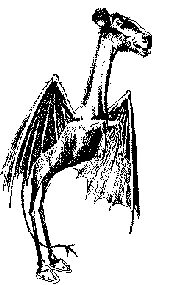Folklore of the United States
Folklore of the United States encompasses a wide range of stories, myths, legends, beliefs, folk songs, and traditions that are part of the cultural heritage of the United States. This folklore has been shaped by the country's history of immigration, the blending of indigenous cultures, and the experiences of its diverse population. It includes the tales of Native American folklore, the lore of the European settlers, the narratives of African American folklore, and the stories brought by immigrants from around the world.
Origins and History[edit | edit source]
The origins of American folklore begin with the Native Americans, who had a rich tradition of storytelling, with tales that explained the natural world, taught moral lessons, and preserved the history of their people. With the arrival of European settlers in the 16th and 17th centuries, new layers were added to the country's folklore. These settlers brought with them the folklore of their homelands, which mingled with the indigenous stories and those of subsequent immigrants.
During the period of slavery, African Americans developed a unique set of folklore that often reflected their struggles, hopes, and resistance. This includes the famous Br'er Rabbit stories, which originated in African folklore and were adapted to the American context, often symbolizing the slave's resistance against the master.
The 19th century saw the rise of a distinctly American set of legends and tall tales, featuring larger-than-life characters such as Paul Bunyan, Johnny Appleseed, and Pecos Bill. These stories were often exaggerated accounts of pioneering life and the challenges of the American frontier.
Key Themes and Types[edit | edit source]
American folklore encompasses a variety of themes and types, including:
- Tall tales: Exaggerated stories about the feats of folk heroes. - Urban legends: Modern myths that are believed to be true and are spread among people as possible events. - Folk music: Songs that have been passed down orally, reflecting the country's diverse cultural influences. - Ghost stories: Tales of haunted places and supernatural occurrences. - Folk art: Artistic expressions that are rooted in the traditions and cultural identity of a community.
Regional Folklore[edit | edit source]
The United States' vast geography and diverse population have led to a rich tapestry of regional folklore. For example, the folklore of the Appalachian Mountains is distinct from that of the Pacific Northwest, with each area having its own set of stories, legends, and traditions. The Southwestern United States, with its blend of Native American and Hispanic influences, has a unique folklore tradition that includes tales of La Llorona and the Chupacabra.
Preservation and Study[edit | edit source]
Organizations such as the American Folklore Society work to preserve and study American folklore. The Library of Congress's American Folklife Center is another key institution in the preservation of the country's folk traditions.
Influence on Popular Culture[edit | edit source]
American folklore has had a profound influence on the country's literature, music, film, and art. Characters and stories from folklore have been adapted into novels, movies, and other forms of entertainment, reflecting the enduring appeal of these traditional tales.
Conclusion[edit | edit source]
Folklore of the United States is a reflection of the country's complex history and cultural diversity. It continues to evolve, incorporating new stories and influences, while also preserving the traditions of the past. As such, it remains a vital part of the American cultural landscape.
Search WikiMD
Ad.Tired of being Overweight? Try W8MD's physician weight loss program.
Semaglutide (Ozempic / Wegovy and Tirzepatide (Mounjaro / Zepbound) available.
Advertise on WikiMD
|
WikiMD's Wellness Encyclopedia |
| Let Food Be Thy Medicine Medicine Thy Food - Hippocrates |
Translate this page: - East Asian
中文,
日本,
한국어,
South Asian
हिन्दी,
தமிழ்,
తెలుగు,
Urdu,
ಕನ್ನಡ,
Southeast Asian
Indonesian,
Vietnamese,
Thai,
မြန်မာဘာသာ,
বাংলা
European
español,
Deutsch,
français,
Greek,
português do Brasil,
polski,
română,
русский,
Nederlands,
norsk,
svenska,
suomi,
Italian
Middle Eastern & African
عربى,
Turkish,
Persian,
Hebrew,
Afrikaans,
isiZulu,
Kiswahili,
Other
Bulgarian,
Hungarian,
Czech,
Swedish,
മലയാളം,
मराठी,
ਪੰਜਾਬੀ,
ગુજરાતી,
Portuguese,
Ukrainian
Medical Disclaimer: WikiMD is not a substitute for professional medical advice. The information on WikiMD is provided as an information resource only, may be incorrect, outdated or misleading, and is not to be used or relied on for any diagnostic or treatment purposes. Please consult your health care provider before making any healthcare decisions or for guidance about a specific medical condition. WikiMD expressly disclaims responsibility, and shall have no liability, for any damages, loss, injury, or liability whatsoever suffered as a result of your reliance on the information contained in this site. By visiting this site you agree to the foregoing terms and conditions, which may from time to time be changed or supplemented by WikiMD. If you do not agree to the foregoing terms and conditions, you should not enter or use this site. See full disclaimer.
Credits:Most images are courtesy of Wikimedia commons, and templates, categories Wikipedia, licensed under CC BY SA or similar.
Contributors: Prab R. Tumpati, MD




